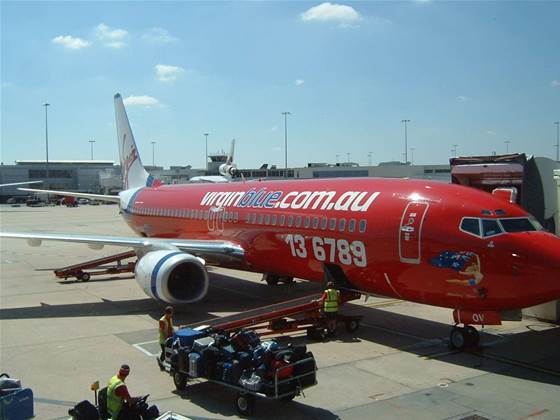The return flight

Joyce and his IT management peers wanted to restore what they describe as the airline's "business agility."
"Agility is the ability to react to externally market demands or internal changes," he said. "Agility is being able to execute on new ideas very quickly."
First, the airline had to establish some ground rules. A Technology Strategy Team was established to assess a new organisational structure.
"We decided to move to a supply chain structure," he said. "Rather than operating in individual silos, we separated out a future strategy group, which would hand off to a design and implementation group to put a service together, to an operations group that managed that service."
Next up, a critical evaluation of the IT team itself. Joyce said the airline didn't intend to keep adding employees to meet the demand, nor did it want to make anyone redundant. Outsourcing was a natural option. But the airline wasn't simply looking to shift costs.
Instead, the airline's outsourcing strategy was designed to retain Virgin's most important IT staff. Joyce said that many of the original members of the IT team had built systems on which the airline relied upon, but had not documented their work and were stuck in support roles maintaining those systems.
"We adopted a plan of selective outsourcing," Joyce said. "We took the IP we'd built up, the people who had a great knowledge of the business, and offered for them to move into strategy and design roles rather than supporting these systems. We outsourced the support roles and got our core team to focus on the new stuff."
Joyce said it was a "long journey" to get the systems documented.
"Nothing was documented," he said. "There had been no time to do it. There was no knowledge transfer."
This strategy meant that Virgin never needed to make any IT staff redundant, and kept its IP within the business.
"We only outsourced to manage the bread and butter of supporting our operations," he said.
The governance of ideas
Next, the IT team sat business unit leaders down to sort out the "governance of good ideas" coming from the business - to work out a priority list that would funnel the best ideas to IT first.
"Like any start-up, any employee had been empowered to come to IT with an idea," Joyce said. "Ideas were queued up to 500 requests with no ability to look at them all."
Projects had only been prioritised according to "whoever yelled loudest", he said.
The IT team developed an enterprise project methodology - a common language by which people could know how to engage with IT in a standardised way.
The team also had to decide on which "big platforms" it would bet the airline's future on, knowing that it didn't have the funding for every project proposed.
The benefits of cloud computing - upon which certain applications will be hosted in large, global data centres and charged back to the organisation on a per-use basis - was a consideration.
"Not everything is ready to go there today," Joyce said. "We looked across the stack and sought the biggest pains from an investment point of view."
One pain point is a four year old storage area network, built across three physical sites and approaching end of life.
The airline wanted to avoid the "block-y" capital investment required every time a new 10 TB needed to be added to the SAN.
"We have been looking at managed storage providers - but not Amazon or Google or the big public clouds - simply having someone else run storage infrastructure from our own data centre, selling it back to us on per TB basis," he said. "That is now close to becoming a reality for us."
The airline has also virtualised 30 percent of its server capacity across two data centres.
But Joyce said that to date, the company has only virtualised "the low hanging fruit".
"Anything that might have been tricky has stayed in physical world," he said. "Oracle database services, for example, probably won't be virtualised, but app servers will."
Joyce said the organisation isn't opposed to renting software as a service either.
"We've never had a policy of sacred cows," he said. "From day one, our core reservations system was externally hosted and managed. We know it can be done, we know the pain points."
The IT team is now progressively working through the few hundred applications that run the airline to see which can be scrapped, which can be outsourced (in support terms) and which can be hosted externally.
It is also looking closely at its network and security to continue to ensure PCI compliance. Joyce said some $2.6 billion worth of credit card details pass over its networks every year.
The organisation has also invested in a project concerned with SOA architecture and has revived a business intelligence project that had stalled during the fuel crisis and GFC.
Getting IT's mojo back
In sum, Joyce said the airline is now "well positioned from here to put IT back on the agenda," he said.
The more refined IT strategy has had "a lot of buy-in from the business."
The IT team has its confidence again, looking at new applications and beating rival Qantas to market on providing mobile check-in.
"We aren't just an order taker anymore," Joyce said.



.png&h=140&w=231&c=1&s=0)







 Digital NSW 2025 Showcase
Digital NSW 2025 Showcase












_(1).jpg&h=140&w=231&c=1&s=0)



